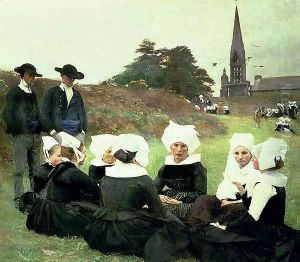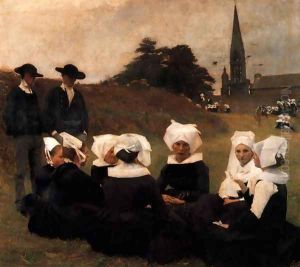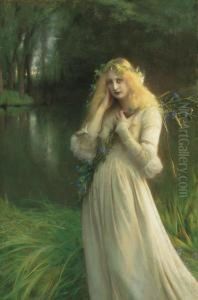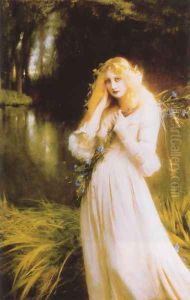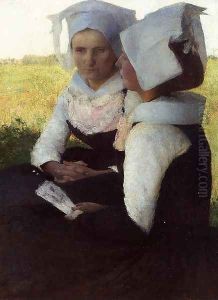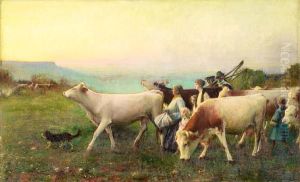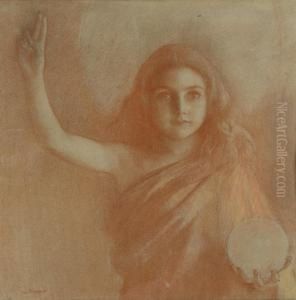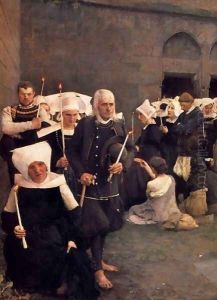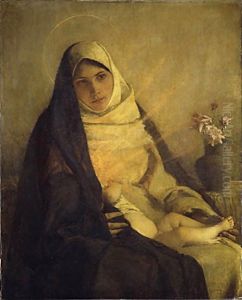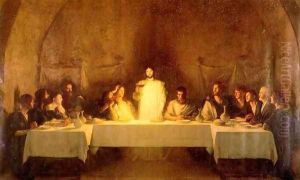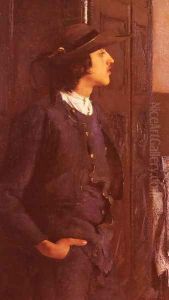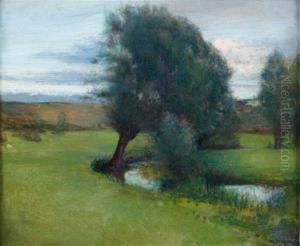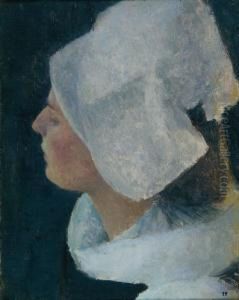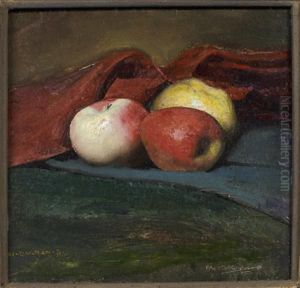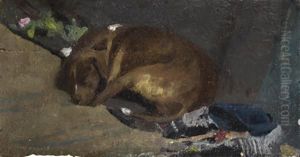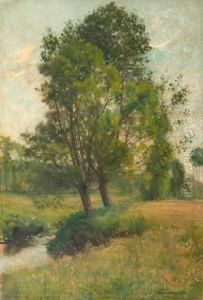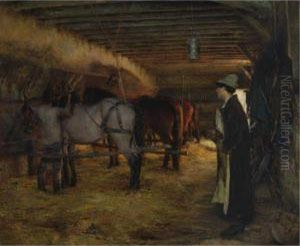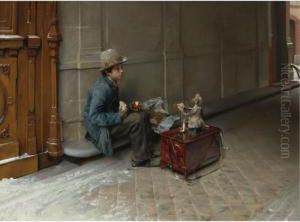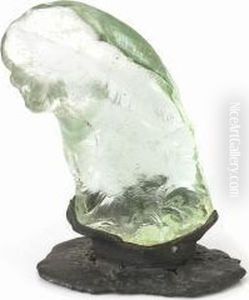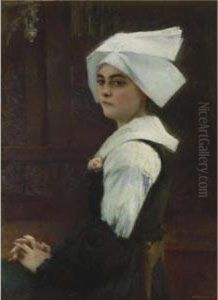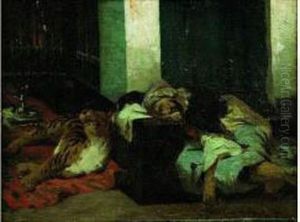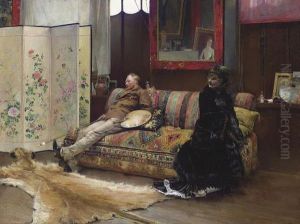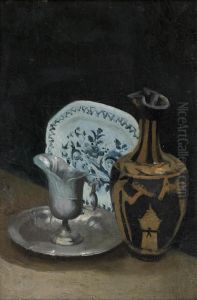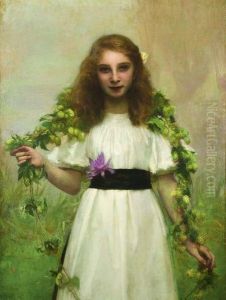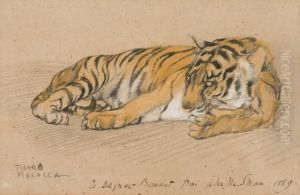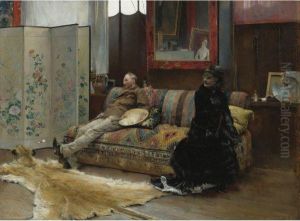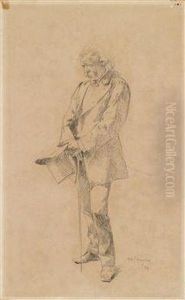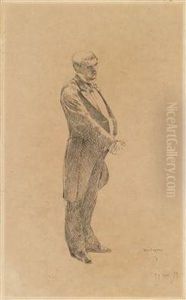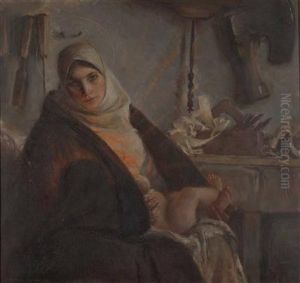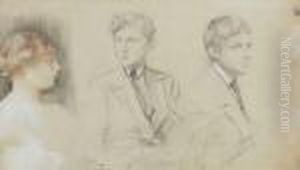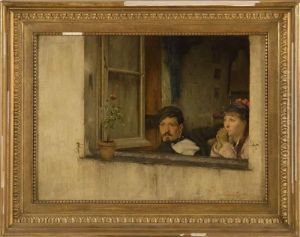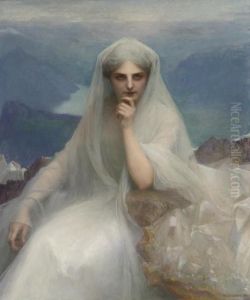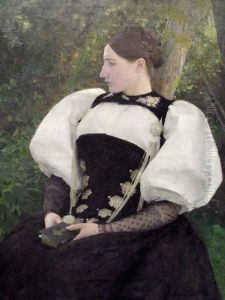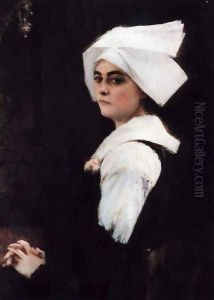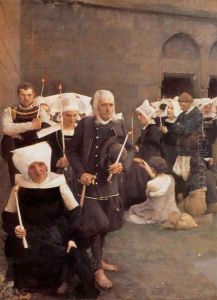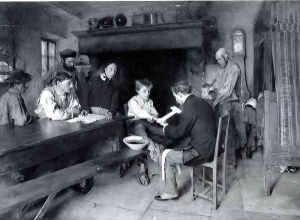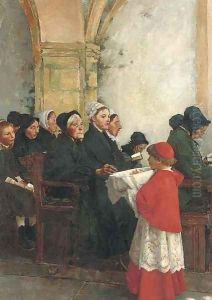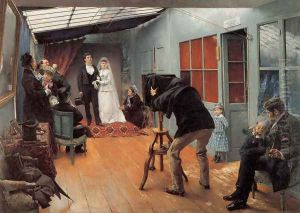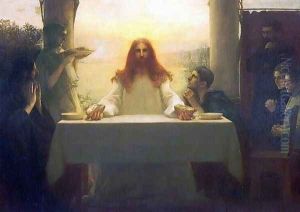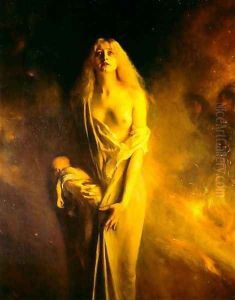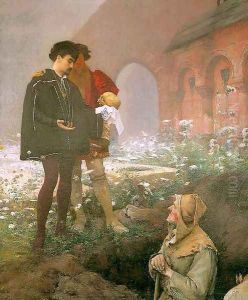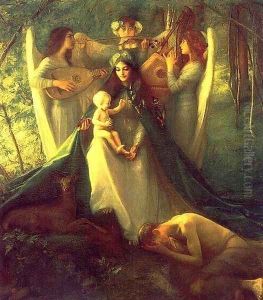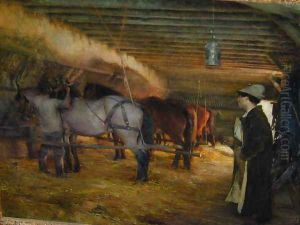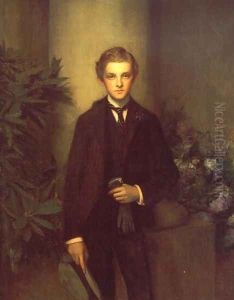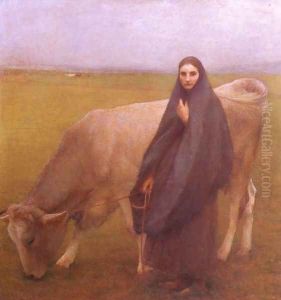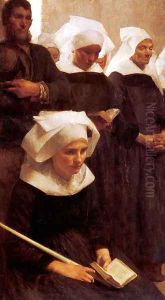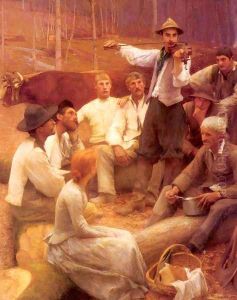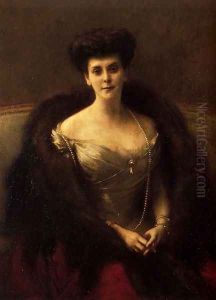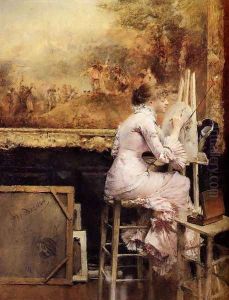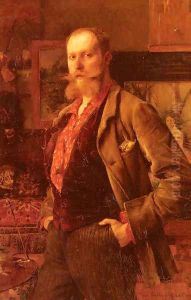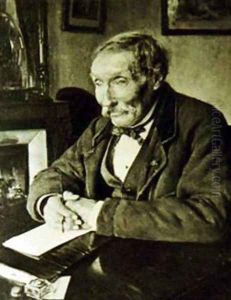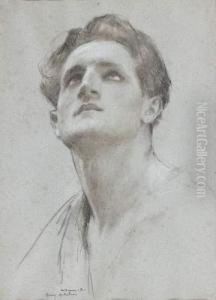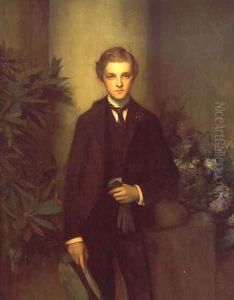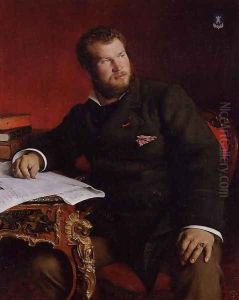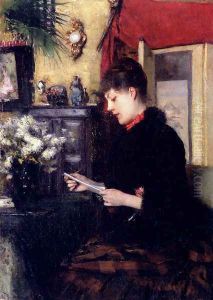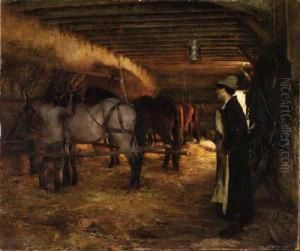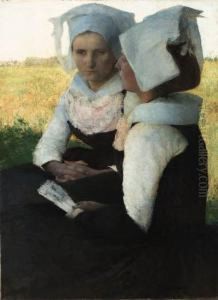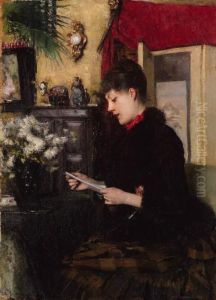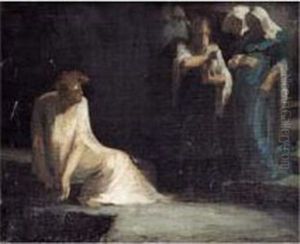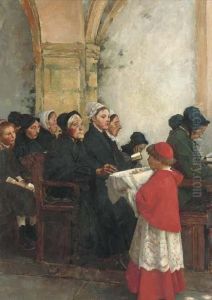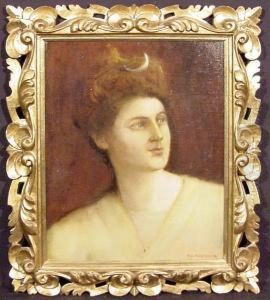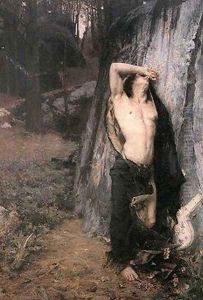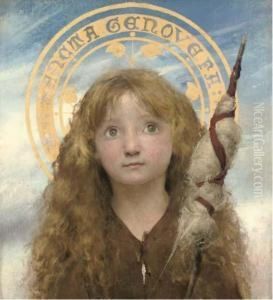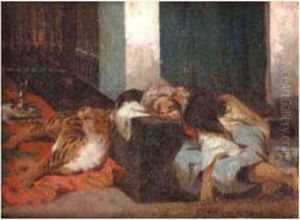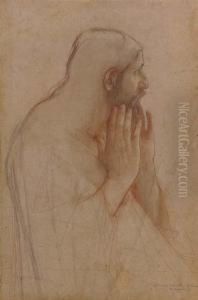Pascal-Adolphe-Jean Dagnan-Bouveret Paintings
Pascal-Adolphe-Jean Dagnan-Bouveret was a French painter, one of the leading naturalist artists during the late 19th century, along with artists like Jules Bastien-Lepage. He was born on January 7, 1852, in Paris, France. Early in his life, he demonstrated a strong inclination towards art and began his formal training at the École des Beaux-Arts in Paris. He studied under the influential and renowned French painter Jean-Léon Gérôme, who was known for his precise and polished academic style.
Dagnan-Bouveret's early work reflected the academic tradition, but he gradually shifted towards a more naturalistic approach, which was gaining popularity at the time. His subjects often included rural scenes, religious themes, and portraits. One of his most famous works is 'Les Bretonnes au Pardon', which depicts a group of Breton women at a traditional religious pilgrimage in Brittany. This painting showcases his ability to capture the essence of rural French life with a sense of realism and empathy.
Throughout his career, Dagnan-Bouveret also experimented with photography, which influenced his artistic practice. He used photographs to create realistic lighting and compositions, which was quite innovative for his time. His meticulous attention to detail and his use of light are evident in his paintings, which often convey a sense of peacefulness and tranquility.
The artist's reputation grew, and he received various honors, including the Legion of Honour in 1885. His works were exhibited internationally, and he gained recognition not only in France but also in the United States and other countries.
As the new century dawned, Dagnan-Bouveret's popularity began to wane as the art world shifted its interest towards more avant-garde movements such as Impressionism and Post-Impressionism. Nonetheless, he continued to paint until his later years, remaining faithful to his naturalistic style.
Pascal-Adolphe-Jean Dagnan-Bouveret passed away on July 3, 1929, in Quincey, France. His legacy lives on through his contributions to the Naturalist movement, and his works can be found in major museums and collections around the world. He remains a respected figure in the history of French art for his commitment to depicting the reality of his time with both technical skill and emotional depth.
